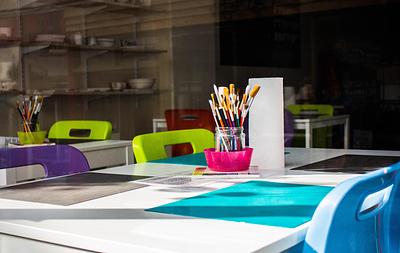Looking for all Articles by Hannah Sycamore?
Getting started with creative writing in class
Explore new and different approaches to creative writing in your classroom.

A strong reading culture and a strong writing culture go hand in hand. By spending more time on creative writing, you will see improvements in literacy and by spending more time reading, pupils will have a wealth of ideas to bring to their own writing. Our evidence review features the research behind the importance of creative writing, and gives more detail of the link between reading, writing and literacy skills. If your pupils are reluctant writers or you're looking for some new ideas to try, here are different ways to approach creative writing in your classroom.
Take inspiration from books
If your class are currently enjoying a great read together, or have favourite books that they love talking about, you can use this as a creative writing prompt. Pupils could try writing an alternative ending or deleted scene, or invent their own character. One school asked pupils to imagine falling into their favourite book and wrote about what they would find there!

Free Writing Friday
One of the most exciting things about creative writing is the freedom and limitless possibilities it provides! Encourage pupils not to fear the blank page and set aside some time for them to write whatever they like. It can seem daunting at first, but giving pupils space and complete freedom can yield fantastic results and help them develop a real love for writing. Previous Children's Laureate Cressida Cowell advocates this approach in her Free Writing Friday Campaign(this link will open in a new window) which many schools take part in.

Hear from the experts
Authors are the masters of the writing craft and they have some fantastic tips to share. Perhaps you are lucky enough to have an author visiting you in your school, but if not BBC Authors Live is a great option. The broadcasts have some great creative writing tips which are easily transferable to a classroom setting.

Blackout poetry
Creating a poem for the first time can seem a bit daunting, but with the blackout poetry technique all the words you need are already provided! This creative approach uses a block of text as the starting point – a photocopied page from a book will do. Pupils then colour over all of the words they don't want to use to reveal their poem. It's a great way to encourage children to think carefully about each word and how they can fit together to create something new.
Our student teacher Miss Austen was inspired by @scottishbktrust training last night about writing, and tried some blackout poetry with Mrs Frasers S2. Fabulous job #weAREphs pic.twitter.com/csBbM8NQZO
— Perth High English (@EnglishPhs) February 25, 2022
Write for someone else
Writing for someone else can really help pupils generate ideas and think about who might enjoy reading their work. Ask your upper primary pupils to write for your lower primary pupils. This activity works especially well if you already have a paired reading project in place. Work with pupils to look at picture books together first, to help pupils plan their story and talk about layout and design. You can use our writing a picture book in class resource to help your pupils generate ideas and write their story. Pupils will get a huge amount of satisfaction and pride when they see their creative writing being read and enjoyed by others.

How do you approach creative writing with the young people you work with? If you try any of these ideas or have different ones to recommend we would love to hear about them. Send a tweet to us(this link will open in a new window) tagging @ScottishBkTrust on Twitter.
If you're looking for more information on creative writing for schools, check out our website section full of learning resources, fun activities and information on how to embed creative writing in the classroom.